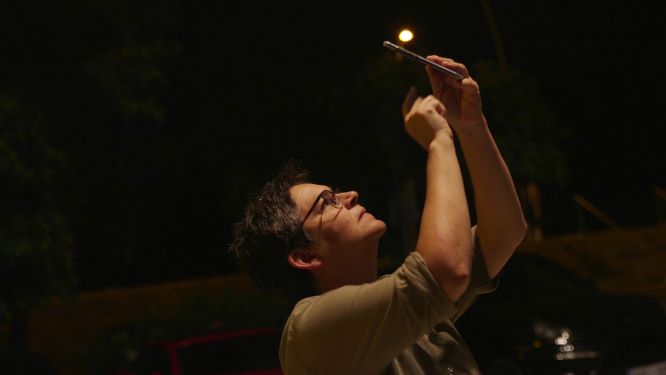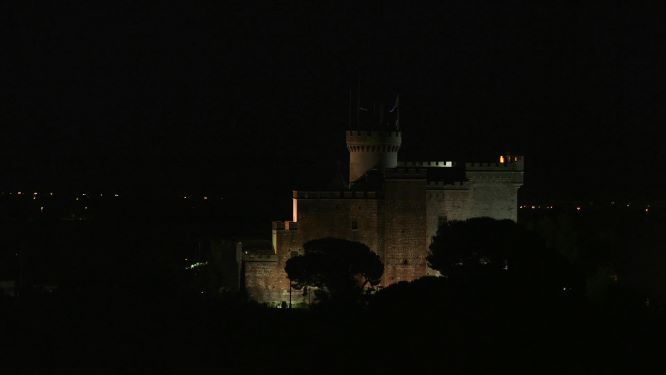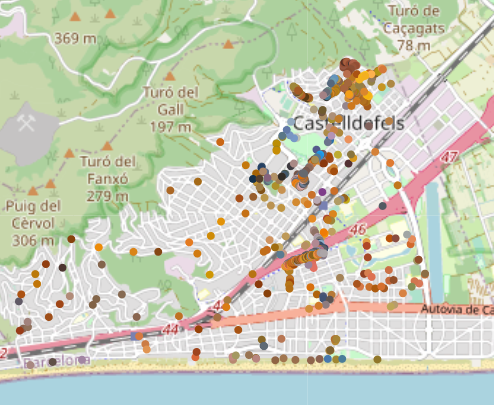NightUp Castelldefels – About the project
About the project
Not being able to see the stars is just one of the many other consequences of light pollution: changes in ecosystems, wasted energy, effects on our health, etc.
NightUp aims to generate a tool that is useful to scientists and experts investigating this type of contamination.
Thanks to the collaboration of citizen scientists like you, we have created a color map of artificial light of Castelldefels that would help to better understand the impact of color on light pollution. Due to its simplicity and scalability, this project has the potential to be expanded to larger areas.
Citizen scientists made NightUp Castelldefels grow during the five months of data collection campaign: thanks!
We collected more than 1100 photos in our database: thanks for making us reach our goal!
Click on the photo to look at the map of the spatial distribution of colors in artificial light at night in Castelldefels.
The results have been published in a prestigious scientific journal and have been mentioned in El País!
Light pollution
Light pollution is the sum of all the negative effects that artificial light has on the environment. This includes the impact of all that light that does not fulfill its purpose, such as when the lighting system is poorly directed or the light is too intense.
Artificial lighting has clear beneficial effects: it is difficult to imagine our life without the possibility of turning on the lights at night! We need artificial light in many situations, but it must be used correctly to limit its negative consequences.
About half the population of the European Union and more than two thirds of the US population live surrounded by so much artificial light, that at night they cannot observe the Milky Way with the naked eye. This type of pollution, in addition to preventing the enjoyment of a starry sky at night, also generates imbalances in ecosystems, has effects on people’s health and involves a cost of energy and money often unnecessary.
If you want to better understand the consequences of light pollution, you can find information in the websites of associations that fight against it, such as the International Dark Sky Association (www.darksky.org), Cel Fosc (https://celfosc.org /) or follow our collaborator Dr. Alejandro Sánchez de Miguel – expert in light pollution – on Twitter (@pmisson).


Image ISS028-E-26304 courtesy of the Earth Science and Remote Sensing Unit, NASA Johnson Space Center
WHy NightUp?
All aspects of artificial light (intensity, color, direction of light, hours when the light is kept on, …) play their own role in the impact that light pollution can have. Therefore, detailed information on each of these aspects is needed to understand the role played by each of the parameters and have a complete and clear vision of the effects that artificial light can have on the environment and our health.
Currently, scientists have maps with information about the intensity of artificial light that allow them to make environmental impact studies in various areas of the planet. These data are obtained through images of the Earth made from satellites in space with sensors that are blind to some parts of the color spectrum. For example, they cannot detect the blue region of the spectrum, leading to imprecise estimation of the light intensity.
Furthermore, in recent years it has been shown that the impact of light is different depending on the color. In general, it seems that lights with more blue components tend to have more negative effects than those that are more yellow or reddish. Therefore, scientists need a tool to investigate the relationship between the color of light and the different effects of light pollution.
The aim of NightUp is to generate a map of the color of artificial light in order to help scientists draw conclusions about the effects of the color of artificial light on living beings and ecosystems. Citizen participation is essential to obtain local and detailed information, which would be very complicated (and expensive) to obtain otherwise. With NightUp, people could actively participate in a scientific experiment, contributing to progress in the search for solutions to a global problem, such as light pollution.
citizen science
To participate in NightUp, people had to take pictures of the various artificial light elements found in the streets of Castelldefels through the web application of the project. All images were analyzed later, with the aim of generating a map of the color of the artificial light of Castelldefels. In this way, people like you helped scientists and experts in light pollution while discovering the night of Castelldefels from another perspective. Citizen participation is absolutely essential for this project to work. The more photos and participants, the better!


FROM CASTELLDEFELS TO THE WHOLE WORLD
To participate in NightUp, you need a single measuring instrument: the smartphone camera. This is an unusual thing in a scientific experiment and is an important challenge for the project. To obtain valid and reliable results, scientists normally use well-calibrated instruments designed for that purpose under controlled conditions. In NightUp we extract information from photos taken with different instruments and that have not been designed for scientific research: the cameras of our phones. Being able to compare the information obtained with so many different instruments is essential, so that the data collected with NightUp have scientific validity to create a coherent map of light pollution and can be used for further research.
We designed an algorithm to extract the colour of the lamp from the photos collected through the NightUp app. In order to validate our method, we compared the colors obtained with the ones of the lamps registered in the database of public streetlights provided by the city council of Castelldefels: the results show that it is possible to distinguish accurately warm from cold lights by using uncalibrated instruments.
We also showed that our results add information to the the ones obtained from a more traditional method, a photo of the Barcelona area taken from the International Space Station (ISS) with a calibrated digital camera. While the ISS photo covers a large area with just one click, the NightUp approach can reach higher spatial resolution and lamps that are not accessible to satellites (like the ones below the canopies of trees).
The published study shows that the NightUp approach is scalable to larger areas and that it retrieves useful high-quality data for scientists working on the study of light pollution, as well as for local governments to optimize outdoor lighting and address light pollution effectively.
RELATED PROGRAMS
photonics in 5 minutes!
Engaging talks and informal conversations with the people working in cutting-edge research.
Young Photonics Congress 2024
march 15, 2024 deadline for project submissions: january 29, 2024Are you a high school student who likes science and technology and would you like to meet and share your work with other people like you? ICFO is giving you a great opportunity: join the next Young...
Young Photonics Congress
A scientific meeting point for young students ICFO annually organizes the Young Photonics Congress, a meeting point for young students that makes them live the experience of a scientific congress where the spotlight is on them. Students can explain their work to other...
Books and stories
Creating publications for different audiences ICFO reaches out to all ages through books and other publications that aim at immersing readers in the fascinating world of photonics. FROM THE BIG BANG TO LASER EXPLORERS IN SPACE lluminado and Lucilda is a series...
Contests
Science through other disciplines ICFO creates multidisciplinary contests that encourage participants to get inmersed in the fascinating world of science and photonics through literature, music and the audiovisual arts. Light on the Waves integrates science,...
Exhibitions
Informative panels, posters and interactive installations to bring science and photonics closer to society ICFO creates exhibitions in different formats about Photonics and its applications, conceived and designed to capture attention, raise interest and increase the...
Magic Shows for Light Explorers
Learning about photonics in a magical way Light, its nature and its properties are as amazing as they are useful. In our daily life, the things we do, the objects we use, how we generate and harness energy, the way we communicate and how we take care of our health,...
ICFO in fairs and other big events
ICFO participates in science and technology fairs, congresses and other events organized by other organizations with the aim of expanding the reach of our outreach efforts. We create hand-on activities, workshops and intearctive stands and give talks that bring a...
Challenges to leveraging innovation
ICFO organizes photonics challenges to promote the opportunities that photonics pose to innovation ICFO creates challenges that give participants the chance to use their own creativity to design, build and test solutions that integrate photonics. These projects are...
Workshops: putting photonics to work
Hands on activities customized for target audiences ICFO creates workshops around different STEM topics underlying photonics for different age groups. These hands on activities enable participants to learn about photonics in fun ways. They vary in content and format...
Guided visits to ICFO
Discover the power of photonics through interactive activities
Digital platforms
Discover quantum technologies with the Quantum Tour!
Internships and stages at ICFO
Researchers for a while!
Citizen Science
Scientific projects that require the participation of people
High school research projects
Discover how ICFO can help you with your project: there are many opportunities waiting for you!


